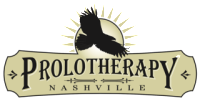What are the disadvantages of Platelet Rich Plasma – PRP?
COST: First, PRP adds to the cost of treatment. Selecting this treatment option adds $500.00 to the cost of a treatment. For this reason, we often try less expensive options first, and they are often effective, even in more ‘extreme’ situations (such as ‘bone on bone’ knees and hips).
SIZE OF POTENTIAL TREATMENT: Secondly, following processing and concentration, we end up with about 13cc’s of solution to inject. While this is a sufficient quantity to treat many conditions, we also have a quite a few patients who have conditions which need more, often much more, solution to administer a thorough and complete treatment. In these situations, PRP is used in the ‘worst, most damaged’ structures, and Dextrose is used in the other structures. In fact, Dextrose is used in ALL of the structures, including ones that will be treated with PRP. This is done for two reasons: first, to ‘pre-numb’ the structures to be treated with PRP, as PRP is quite uncomfortable if injected into an ‘un-numbed’ structure; secondly, because the Dextrose in all likelihood improves growth factor release in the injected white blood cells, just as it does in the white blood cells that reside in the injected areas. In addition, if the size of a ‘thorough and complete’ treatment exceeds the size attainable with PRP, then the remainder of the structures are treated with Dextrose only.
